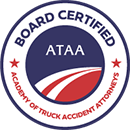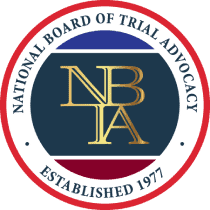Comparative Negligence in Washington Truck Accidents
States in the U.S. are generally described as no-fault or at-fault states when it comes to auto collision insurance. Washington is the latter. Another aspect of this is that states can have contributory negligence, comparative negligence, or comparative fault systems in place. These dictate if and how much a motorist who contributes to causing a crash can recover if they suffer injuries in it. Our state is a pure comparative negligence state. We will go into greater depth about how that impacts any settlement you may be entitled to if you’re involved in a truck accident in Washington.
Understanding Fault for Washington 18-Wheeler Crashes
Fault for tractor-trailer accidents is a determination arrived at by insurance companies. Truck accident attorneys like ours present evidence that discounts these contributory fault determinations when they suggest that our clients contributed to causing the crash to any degree when evidence, such as police reports, surveillance camera footage, or witness statements, show otherwise. Why do lawyers often contest fault? We do so because we also have a comparative negligence doctrine in our state.
Making Sense of Comparative Negligence
Of the different fault systems we described in the introduction to this article, the pure comparative negligence doctrine applies here in Washington. Under this system, any damages you may incur in a car accident would be compensable; however, they’d be reduced by your percentage of fault for the crash if an insurance company determined you contributed to causing the crash, and thus, them. The Revised Code of Washington, and more specifically, RCW 4.22.070, addresses how percentage of fault determinations are made in wrecks.
Our state’s pure comparative doctrine approach contrasts with other states and their at-fault systems, which allow injury victims or prohibit injury victims from recovering compensation altogether, as is the case with a pure contributory negligence system, or limit them from doing so if they’re 50% or 51% or more at fault (the modified comparative fault 50% and 51% rules respectively).
An Example of How Pure Comparative Negligence Works
If you’ve been in a crash with a semi-truck and suffered substantial injuries, it’s understandable that you want to understand how liability works and how this may affect your financial obligations.
Let’s go over an example of what that means. You cut in front of a trucker in hopes of making it off the next exit ramp. While the truck driver immediately applied their brakes upon seeing you do this, they weren’t able to reach a complete stop before reaching you. While they tried to take evasive action to avoid colliding with your vehicle, the semi-truck rear-ended you, albeit at a reduced speed, causing you injuries.
In the situation above, an investigation into the crash revealed that the trucker was speeding before the motorist pulled ahead of them, which increased their braking distance. However unsafe speeding is, though, the likelihood that an accident would have occurred had it not been for the driver attempting to pass the truck to make it off the upcoming exit may have been slim to none.
As you can likely tell, herein lies potential liability on both parties’ parts. There was the motorist who should have perhaps better accounted for the speed the truck was traveling at and how long it would take the trucker to brake before pulling in front of them so close. There’s also the trucker who should have been traveling no faster than the posted speed limit so that they would have been more likely to be able to reach a full stop to avoid a crash if someone cut in front of them.
So, in continuing with the example above, if the motorist were found 30% liable for the crash and the trucker 70%, any accident-related damages the passenger car operator would be able to recover in this instance would be reduced by 30%. So, to make that more clear, if their total damages are $100,000, they’d only be entitled to $70,000 because they contributed to causing the crash and their injuries.
How Comparative Negligence Statutes Apply to Trucking Cases
Fault and comparative negligence are cornerstones in tractor-trailer accident cases that greatly impact your ability to recover compensation. A percentage of fault determination conversations often involve a lot of negotiating back and forth between us, as attorneys and insurance adjusters, when liability isn’t completely clear.
At Trucking Injury Law Group, we always put our clients’ best interests forward, fighting for every possible amount of compensation you need to recover from your losses and receive optimal follow-up care in the future. Contact our law group for a risk-free, complimentary consultation to discuss how the pure comparative negligence may impact your case in Washington or nationwide.






